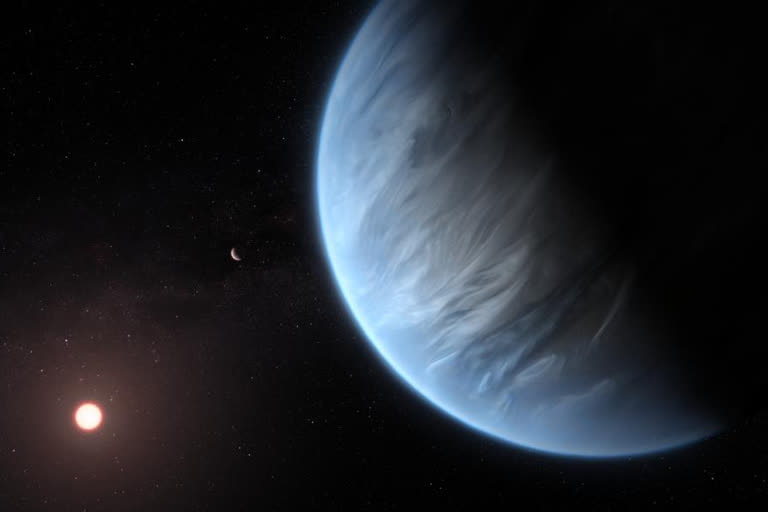Washington: Using data from NASA's Hubble Space Telescope, scientists have for the first time discovered water vapour signatures in the atmosphere of a distant planet called K2-18b which is located in the habitable zone of its star, where conditions can lead to the formation of liquid water and the proliferation of life.
"Finding water in a potentially habitable world other than Earth is incredibly exciting. K2-18b is not 'Earth 2.0' as it is significantly heavier and has a different atmospheric composition," said the study's first author Angelos Tsiaras from University College London.
Given the high level of activity of its red dwarf star located about 110 light years away in the constellation Leo, K2-18b may be more hostile to life as we know it than Earth, as it is likely to be exposed to more high-energy radiation.
"This study contributes to our understanding of habitable worlds beyond our Solar System and marks a new era in exoplanet research, crucial to ultimately place the Earth, our only home, into the greater picture of the Cosmos," said Tsiaras.
Astronomers at the Centre for Space Exochemistry Data at the University College London used data from NASA's Hubble Space Telescope to make the discovery.
If confirmed by further studies, this will be the only exoplanet known to have both water in its atmosphere and temperatures that could sustain liquid water on a rocky surface.
Liquid water would only be possible if the planet turns out to be terrestrial in nature, rather than resembling a small version of Neptune.
The planet, discovered by NASA's Kepler Space Telescope in 2015, also has a mass eight times greater than Earth's. That means the surface gravity on this planet would be significantly higher than on our planet.
The team used archive data from 2016 and 2017 captured by Hubble and developed open-source algorithms to analyse the host star's light filtered through K2-18b's atmosphere.
Also Read: US SC backs Trump's asylum restrictions
The results revealed the molecular signature of water vapour, and also suggest the presence of hydrogen and helium in the planet's atmosphere.
The authors of the paper, published in the journal Nature Astronomy, believe that other molecules, including nitrogen and methane, may be present but they remain undetectable with current observations.



